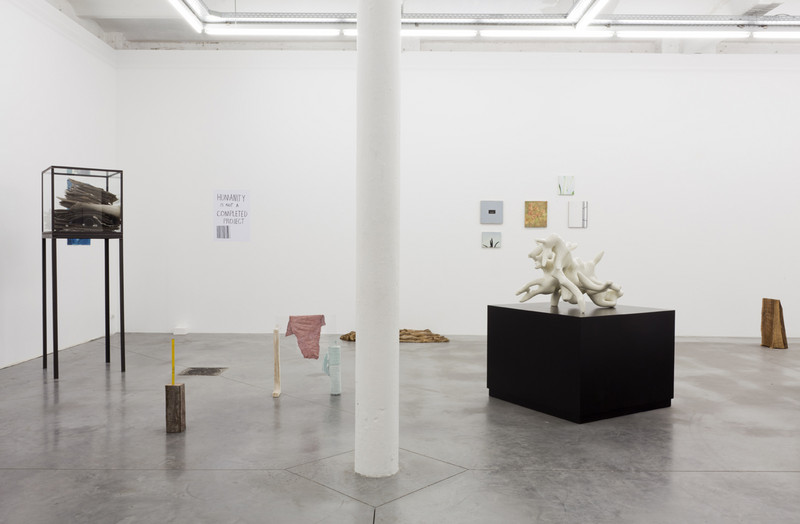IM & EX PLICIT / CURATED BY LUC DERYCKE
15 Dec 2013 - 09 Feb 2014
For our last show of 2013, we are excited to present a group exhibition curated by Ghent-based publisher and designer Luc Derycke. Known for his expertise in making art publications, Derycke functions as an intermediate between the international art & book world. One of his more known initiatives is MER. Paper Kunsthalle, an independent publishing house looking into the book as a place for exhibiting art.
Derycke brings together works that reflect on the perception and visualization of the im- and explicit.
‘A line passes through our perception, a horizon as it were, which requires us to indicate certain things as implicit or explicit. What lies on the horizon could be described as ordinary, or normal, although it is not easy to explain what this normality is made of.
Derived from the Latin word “plicare” which means folding or creasing, implicitly points out what occurred in the folds, and explicitly in what is unfolded. These two words can therefore only relate to what is foldable. Now, for example, a handkerchief is foldable, but the words implicitly or explicitly are in this case not immediately applicable. Rather than the things themselves, these words indicate the representations of these things, or - what are representations otherwise? - what we make of them in our brains.
The handkerchief tells us that a folded and an unfolded representation should essentially be the same, only the extent of visibility plays tricks on us here. We know that we must replace the invisible by our own representations, but often do not even notice the visible because of the existence of our own representations.’
- Luc Derycke, 2013
With works by:
Marie Angeletti
Raf Buedts
Ricardo Brey
Mark Cloet
Luc Coeckelberghs
Stefaan Dheedene
Jimmy Durham
Ida Ekblad
Nick Ervinck
Michael Fullerton
Joris Ghekiere
Ištvan Išt Huzjan
Jan Van Imschoot
Willem Oorebeek
Lore Rabaut
Juliao Sarmento
Richard Serra
Lawrence Weiner
Derycke brings together works that reflect on the perception and visualization of the im- and explicit.
‘A line passes through our perception, a horizon as it were, which requires us to indicate certain things as implicit or explicit. What lies on the horizon could be described as ordinary, or normal, although it is not easy to explain what this normality is made of.
Derived from the Latin word “plicare” which means folding or creasing, implicitly points out what occurred in the folds, and explicitly in what is unfolded. These two words can therefore only relate to what is foldable. Now, for example, a handkerchief is foldable, but the words implicitly or explicitly are in this case not immediately applicable. Rather than the things themselves, these words indicate the representations of these things, or - what are representations otherwise? - what we make of them in our brains.
The handkerchief tells us that a folded and an unfolded representation should essentially be the same, only the extent of visibility plays tricks on us here. We know that we must replace the invisible by our own representations, but often do not even notice the visible because of the existence of our own representations.’
- Luc Derycke, 2013
With works by:
Marie Angeletti
Raf Buedts
Ricardo Brey
Mark Cloet
Luc Coeckelberghs
Stefaan Dheedene
Jimmy Durham
Ida Ekblad
Nick Ervinck
Michael Fullerton
Joris Ghekiere
Ištvan Išt Huzjan
Jan Van Imschoot
Willem Oorebeek
Lore Rabaut
Juliao Sarmento
Richard Serra
Lawrence Weiner

